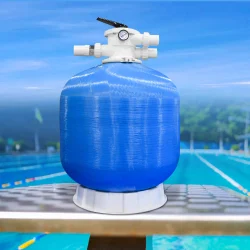Construction and Design of Fiberglass Filters
2024-06-15
Fiberglass filters, also known as fiberglass media filters or fiberglass air filters, are a type of mechanical filter used primarily in HVAC (Heating, Ventilation, and Air Conditioning) systems and air purification applications. These filters are constructed using fiberglass fibers arranged in a dense mat or pleated configuration to capture particles from the air as it passes through. Here are the key aspects and characteristics of fiberglass filters:
Construction and Design:
1. Fiberglass Media:
- Fiberglass filters are made from fine fiberglass fibers that are layered or pleated to create a dense, intricate network. The fibers are typically coated with an adhesive to enhance filtration efficiency.
2. Frame and Support:
- The filter media is typically enclosed within a sturdy frame made of cardboard, metal, or plastic. The frame provides structural support and ensures a tight fit within the HVAC system.
3. Pleated Design:
- Many fiberglass filters feature a pleated design, which increases the surface area of the filter media. This design enhances the filter's capacity to capture particles while maintaining airflow.
Filtration Efficiency and Particle Capture:
- Particle Size: Fiberglass filters are effective at capturing larger particles such as dust, pollen, lint, and pet dander. The effectiveness in capturing smaller particles varies depending on the specific design and filtration rating of the filter.
- MERV Rating: Fiberglass filters are rated using the Minimum Efficiency Reporting Value (MERV) scale, which ranges from 1 to 16 (higher values indicate higher efficiency). Fiberglass filters typically range from MERV 1 to MERV 12, with higher MERV ratings indicating better filtration of smaller particles.
Advantages of Fiberglass Filters:
- Cost-Effective: Fiberglass filters are generally more affordable compared to high-efficiency filters like HEPA (High Efficiency Particulate Air) filters or electrostatic filters.
- Low Resistance to Airflow: They typically have lower resistance to airflow compared to denser filters like HEPA filters, which helps maintain efficient operation of HVAC systems.
- Disposable and Easy to Replace: Fiberglass filters are disposable and easy to replace, making maintenance simple for homeowners and HVAC technicians.
Considerations and Limitations:
- Filtration Efficiency: While effective for capturing larger particles, fiberglass filters may not be as efficient at trapping smaller particles and microorganisms as high-efficiency filters like HEPA filters.
- Durability: Fiberglass filters are less durable than some other types of filters and may need to be replaced more frequently, especially in environments with high levels of airborne particles.
- Environmental Impact: The disposal of fiberglass filters should be done responsibly to minimize environmental impact, considering the materials used in their construction.
Applications:
- Residential HVAC Systems: Used in homes and apartments to improve indoor air quality by capturing airborne particles and allergens.
- Commercial and Industrial HVAC Systems: Deployed in offices, schools, hospitals, and other buildings to maintain clean air and protect HVAC equipment.
- Ventilation Systems: Used in air handling units and ventilation systems to prevent contaminants from circulating through indoor spaces.
Fiberglass filters provide a balance of cost-effectiveness and basic filtration capability, making them suitable for many residential and light commercial applications where moderate air filtration is sufficient. For environments requiring higher levels of filtration, such as hospitals or laboratories, more advanced filters like HEPA filters may be necessary.



